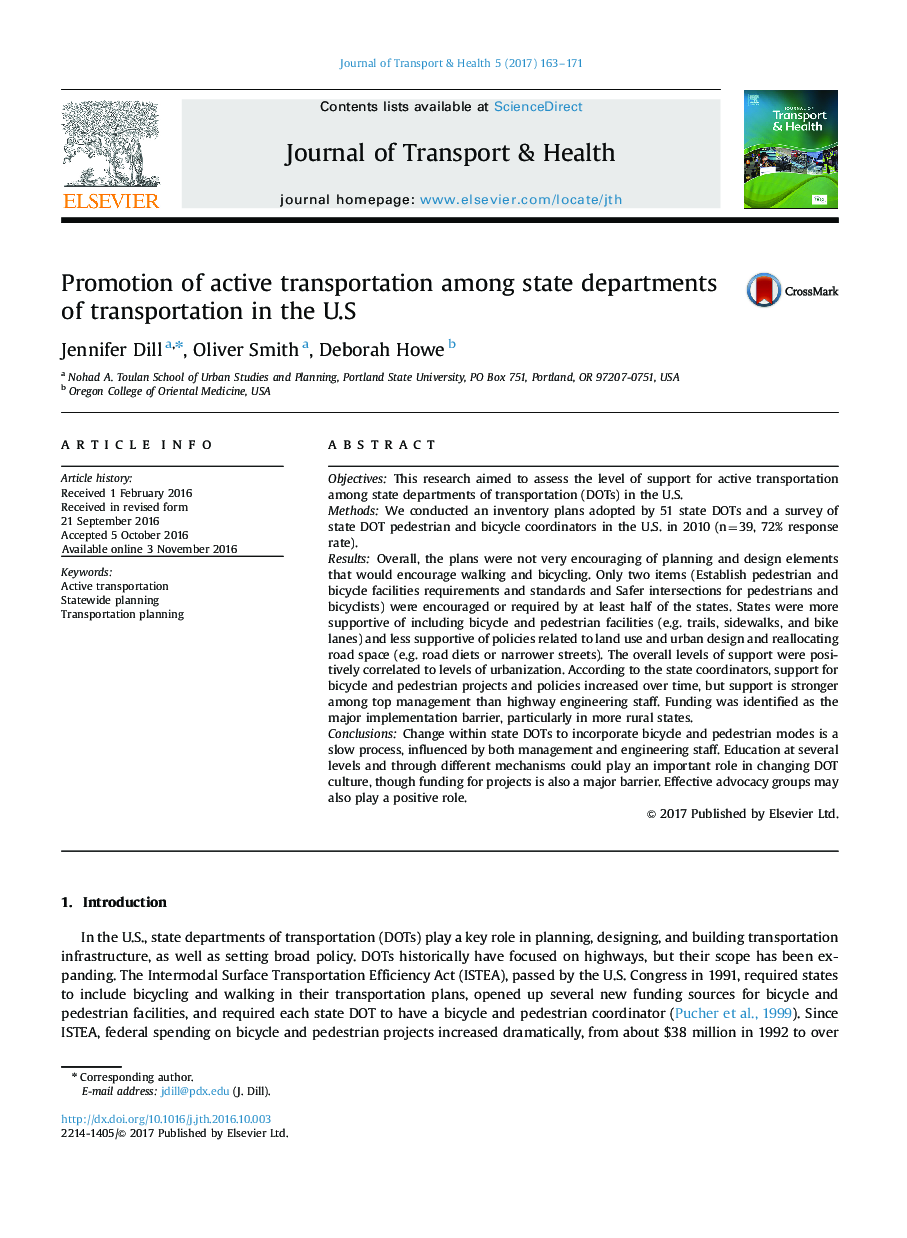| کد مقاله | کد نشریه | سال انتشار | مقاله انگلیسی | نسخه تمام متن |
|---|---|---|---|---|
| 5117845 | 1485456 | 2017 | 9 صفحه PDF | دانلود رایگان |
- Inventory of state DOT plans and survey of state pedestrian and bicycle coordinators.
- Few DOTs support innovative policies.
- Support is correlated with the urban population in the state.
ObjectivesThis research aimed to assess the level of support for active transportation among state departments of transportation (DOTs) in the U.S.MethodsWe conducted an inventory plans adopted by 51 state DOTs and a survey of state DOT pedestrian and bicycle coordinators in the U.S. in 2010 (n=39, 72% response rate).ResultsOverall, the plans were not very encouraging of planning and design elements that would encourage walking and bicycling. Only two items (Establish pedestrian and bicycle facilities requirements and standards and Safer intersections for pedestrians and bicyclists) were encouraged or required by at least half of the states. States were more supportive of including bicycle and pedestrian facilities (e.g. trails, sidewalks, and bike lanes) and less supportive of policies related to land use and urban design and reallocating road space (e.g. road diets or narrower streets). The overall levels of support were positively correlated to levels of urbanization. According to the state coordinators, support for bicycle and pedestrian projects and policies increased over time, but support is stronger among top management than highway engineering staff. Funding was identified as the major implementation barrier, particularly in more rural states.ConclusionsChange within state DOTs to incorporate bicycle and pedestrian modes is a slow process, influenced by both management and engineering staff. Education at several levels and through different mechanisms could play an important role in changing DOT culture, though funding for projects is also a major barrier. Effective advocacy groups may also play a positive role.
Journal: Journal of Transport & Health - Volume 5, June 2017, Pages 163-171
